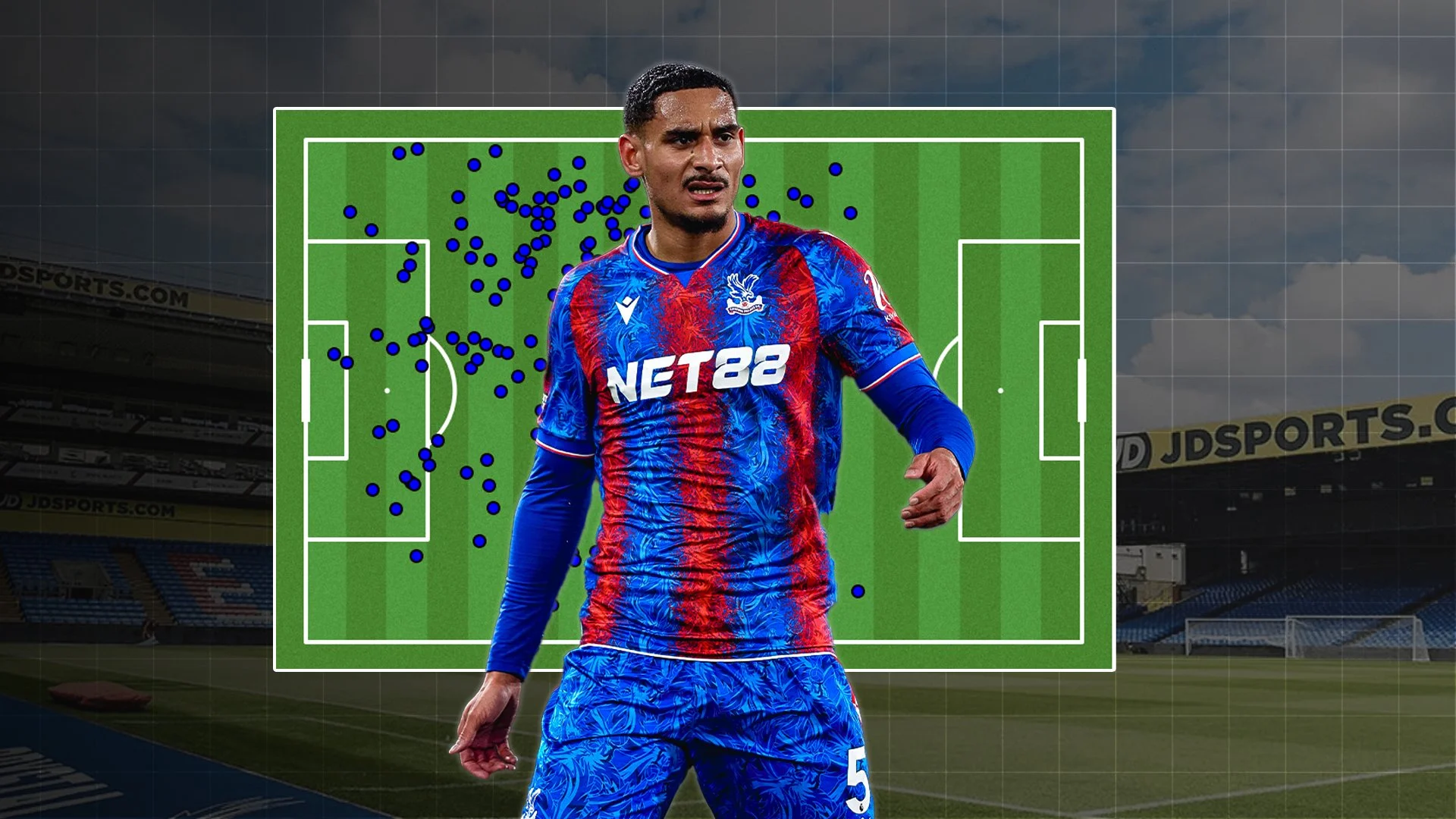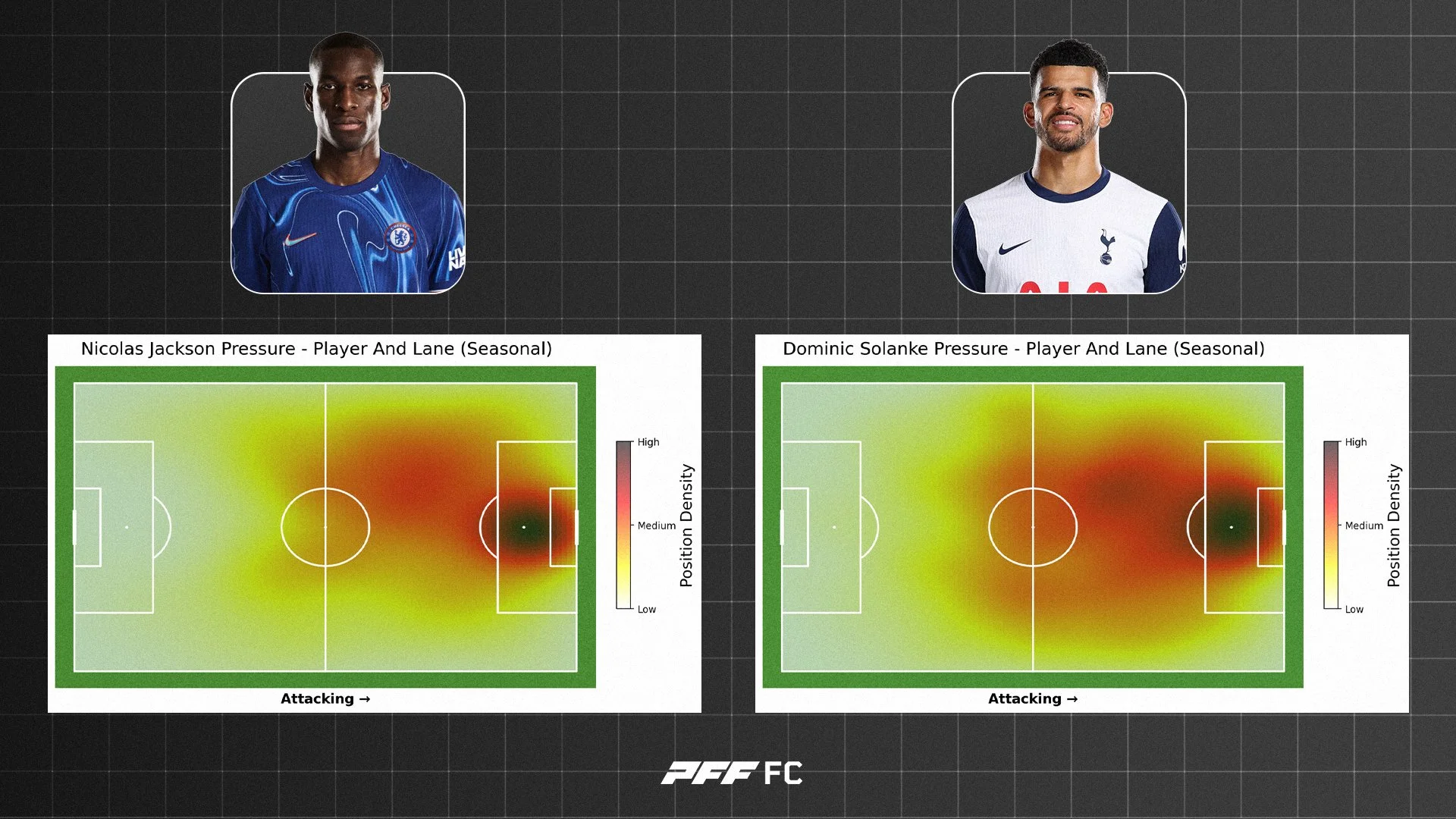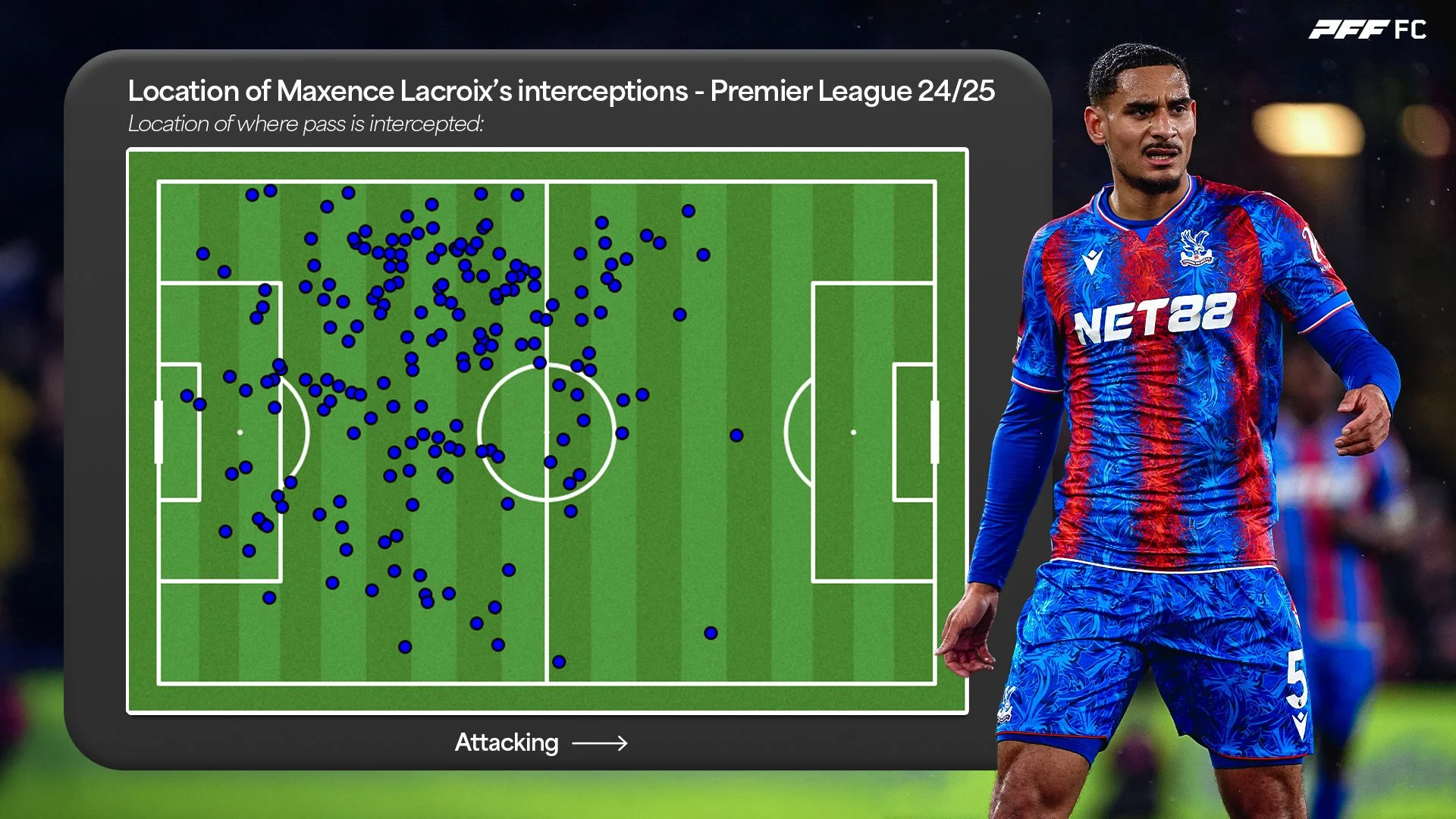Five Defensive Data Points You Need to Know from the 2024/25 Premier League
With the season approaching its end, we dig into the leaders in some of our out of possession metrics, highlighting some interesting defensive data points that you might not know.
Winning the ball in a dangerous position
A good place to start is looking at how players defend in the opposition’s half, so we investigate how often a player wins the ball in a dangerous position. We define a dangerous position as an area where the player could create a chance to score. That can be via blocking or intercepting a pass or clearance, or winning a challenge. To put teams on an even playing field we look at the metrics per 30 minutes spent out of possession, with a minimum of 400 minutes out of possession played.
Here are the amount of times a player wins the ball in a dangerous position in the Premier League this season (per 30 out of possession)
Mikel Merino: 0.94
Bruno Guimaraes: 0.90
Amad Diallo: 0.83
Kobbie Mainoo: 0.80
Nicolas Jackson: 0.77
Honorable mentions go to Diogo Jota (0.99), Nunez (0.97) and Matt O’Riley (0.89) who did not meet the minimum threshold of minutes out of possession.
It is interesting to highlight that Merino’s performance winning the ball in dangerous positions can be explained by looking at his intensity out of possession. When out of possession Merino has covered the 3rd most total distance in the Premier League and is also 2nd in high-speed running distance (5.2 km and 0.63 km per 30 minutes out of possession respectively). This highlights how important it is for Arsenal’s CF to perform in defensive duties just as much as attacking phases under Mikel Arteta, making their summer recruitment plans for a new forward very interesting.
No Forward in the Premier League covers more total distance per 90 out of possession than Mikel Merino
Pressures leading to winning the ball in a dangerous position
Even if a player doesn’t directly win the ball, pressuring an opponent can lead to a recovery by a teammate. Here are the leaders in pressures resulting in ball recoveries in a dangerous position (per 30 minutes out of possession):
Nicolas Jackson: 1.93
Rasmus Højlund: 1.70
Dominic Calvert-Lewin: 1.69
Mikel Merino: 1.65
Dominic Solanke: 1.63
Darwin Núñez again features prominently, with a rate of 1.94, though he fell short of the minutes threshold.
While Merino’s intensity has already been noted, the others show distinct profiles:
Dominic Solanke leads all centre-forwards in overall defensive intensity, covering top marks in pressures, distance, sprinting, and high-speed running. He is constantly pressing and is the catalyst for Tottenham’s out of possession system.
Nicolas Jackson employs a much more focused style: ranking 12th in distance, 9th in high-speed running—but 2nd in sprint count and sprint distance. Chelsea seem to have a much more defined process when pressing compared to the constant intensity of Tottenham
Højlund shows a similar pattern: 4th in sprint distance, 5th in sprint count, and 9th in total distance.
Pass Interceptions with a positive grade
At PFF FC, we grade every event from every player. A pass interception earns a positive grade when it demonstrates strong anticipation or exceptional effort. You can read into how our grading system works here.
Most Pass Interceptions (per 30 minutes out of possession):
Maxence Lacroix: 1.40
Pedro Porro: 1.31
Rodrigo Bentancur: 1.30
Antonee Robinson: 1.24
Marc Cucurella: 1.18
Lacroix also leads in defensive line breaking pass interceptions (0.88) and is 2nd in all line-breaking interceptions (1.56). Unsurprisingly, Crystal Palace allow the lowest line-breaking pass completion rate in the Premier League (70.1%).
Athleticism plays a big role here and correlates with this metric:
Lacroix is the fastest centre-back this season (34.45 km/h) and 5th in sprint distance.
Robinson tops full-backs in max speed (35.48 km/h), 3rd overall league-wide.
Tottenham also feature heavily, correlating with their style of play:
Spurs players dominate this list and nearly had a third inclusion (Bergvall, 1.23).
Tottenham rank 1st in positive pass interceptions (6.68) and pressures applied (364.52) in the Premier League this season.
Four of the top five in distance covered out of possession are Spurs players (Bergvall, Kulusevski, Sarr, and Bentancur), with Porro leading full-backs.
Fewest Positional Downgrades
A positional downgrade occurs when a player is out of position, potentially opening space for opponents. We list those with the fewest downgrades per 30 minutes out of possession (minimum 400 minutes; centre-forwards excluded):
Gabriel: 0.48
Rúben Dias: 0.66
Nikola Milenković: 0.82
Dean Huijsen: 0.88
Issa Diop: 0.89
Gabriel, Milenković, and Diop tend to stay positionally sound and don’t need to exert much high-speed effort. Gabriel ranks 34th in distance covered among CBs; Diop and Milenković rank even lower.
In contrast, Dias and Huijsen maintain low positional errors and display high intensity. Dias leads CBs in both total and high-speed running distance; Huijsen ranks 4th and 8th respectively.
Interestingly, Huijsen’s excellent positioning also contributes to him leading the league in total pass interceptions, and he’s 4th among CBs in interceptions with a positive grade.
Dean Huijsen has secured a £50 million move to Real Madrid off the back of a very impressive season for Bournemouth
Number of Closing-down grades
A closing-down downgrade is given when a player fails to close down space effectively either through delay, poor angle, or lack of urgency. This usually results in the attacker gaining time or space to progress play through a cross, pass or shot.
Fewest Closing-Down Downgrades (per 30 minutes out of possession):
Kamaldeen Sulemana: 6.17
James Bree: 6.36
Bukayo Saka: 6.82
Myles Lewis-Skelly: 6.98
Mikel Merino: 7.05
Southampton and Arsenal dominate this list. While Arsenal excelled in most out-of-possession metrics, Southampton shone in lane pressures, indicating a tactical emphasis on closing space effectively and trying to prevent crosses and balls over the top.
Positive Closing-Down Grades are awarded less frequently, typically for high-effort plays like recovery runs—highlight the following standouts:
Daichi Kamada: 0.32
Mikel Merino: 0.29
Will Hughes: 0.29
Adama Traoré: 0.28
Jefferson Lerma: 0.26
Three Crystal Palace players feature, highlighting that they are often leaving space in behind that requires a lot of recovery runs to prevent counter attacks.
This article was crafted using PFF FC data. If you're affiliated with a club, media outlet, or agency and would like to explore its capabilities, feel free to contact us at sales-fc@pff.com to arrange a demo.





